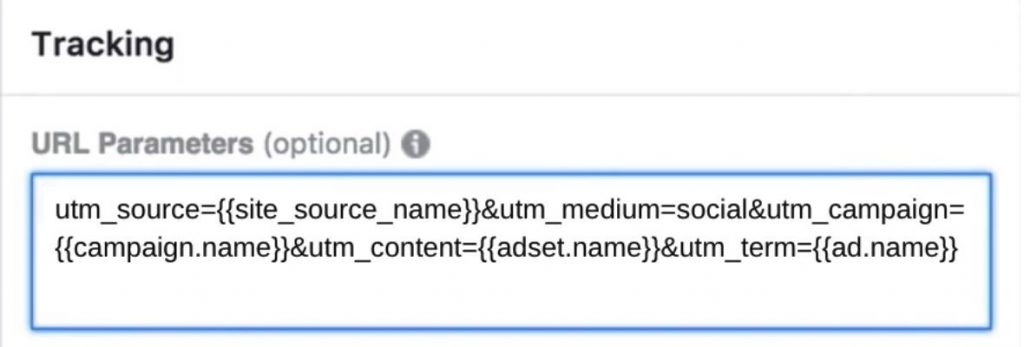Facebook ads can be a vital part of drawing traffic to your website and your company. Yet, when you’re looking through your Google Analytics, it’s not always clear where your visitors are coming from. UTM, or Urchin Tracking Module, parameters can be an invaluable tool for solving this issue. Read on to learn how UTM codes can help you navigate the impacts of your ads.
What are UTM Codes?
UTM codes are variants of a URL that can track your ads’ effectiveness. In short, they can help you identify where your visitors are mainly seeing your campaigns and where they aren’t as useful. There are five UTM parameters:
- utm_campaign:Tracks a particular campaign name to monitor its performance, such as “August launch” or “relaunch”
Example: &utm_campaign=relaunch
- utm_content: Tracks the link that was clicked, in case you have multiple links to the same destination, such as when you have both a text link and a banner ad pointing to the same destination.
Example: &utm_content=textlink
- utm_medium: Tracks which medium the visitor used to reach your website, such as pay-per-click or social.
Example: &utm_medium=social
- utm_source: Tracks the website that sent the traffic source, such as Facebook or Amazon.
Example: &utm_source=facebook
- utm_term: Tracks the search keyword the visitor typed, such as “dress shoes.”
Example: &utm_term=dress+shoes
Let’s say your normal URL is http://mywebsite.com. If you added UTM parameters to track traffic to your website, it would turn into something like this:
http://mywebsite.com/?utm_content=textlink&utm_source=facebook
With these parameters in place, when you view the traffic in analytics, you would know the visitors to your website came from a marketing campaign that had a text link on Facebook.
While these URLs can get lengthy, use Terminus’s URL shortener to shorten them. All UTM URLs are automatically shortened without any additional steps.
You can now copy and paste your link as you please.
Get Started with Terminus
The quickest and easiest way to create UTM links and shorten them in bulk
Start your 21-day Free TrialFacebook Dynamic Parameters
Facebook recognizes the importance of parameters in your ads and has made it easier to track them through Facebook Ads.
Head to Ads Manager and select or create a campaign, go to the Ad level, then create a new ad or select an existing one.
Scroll down and then click Build a URL Parameter, and enter your website URL and the parameters you want to track.
You can make your own custom URL parameters or use the dynamic parameters pre-made by Facebook:
- ad_id={{ad.id}}
- adset_id={{adset.id}}
- campaign_id={{campaign.id}}
- ad_name={{ad.name}}
- adset_name={{adset.name}}
- campaign_name={{campaign.name}}
- placement={{placement}}
- site_source_name={{site.source.name}}
Facebook Dynamic Parameters offers the benefit of auto-populating the values based on the information you input into your campaign, rather than having the user type them out, thus saving you valuable time.
For example, if you want to auto-populate your campaign name for the utm_campaign parameter in order to track a particular campaign, you would click the box next to “Campaign Name” and select the {{campaign.name}} option. This is just an example of a UTM code but utm_campaign is one of the most essential parameters to understand and use effectively when creating a marketing campaign.
Then, in the Parameter Preview box, you would see your updated website URL.
However, if you want to auto-populate all of your UTM Parameters in one instance, you can copy and paste this code snippet:
utm_source={{site_source_name}}&utm_medium=social
&utm_campaign={{campaign.name}}&utm_content={{adset.name}}
&utm_term={{ad.name}}
into the URL Parameters box when you open Ads Manager.
While manual UTM coding is possible, it’s not necessary since it is rather time-consuming. This can be a helpful tool for beginner-level digital marketers in particular. You don’t have to completely educate yourself on UTM coding before creating an ad and seeing its effectiveness.
Using Google Analytics to Check Your Facebook Ads
Now that you’ve set up your dynamic parameters on Facebook, how do you find this information in Google Analytics?
Head to the Acquisition tab and choose All Traffic. Then, you can access UTM codes through Channels, Source/Medium, Social, or All Campaigns. These tabs give you a better picture of where your website’s traffic is coming from, including the Facebook parameters you set up.
For more detailed Facebook analytics, click on the Social tab where you can get data on goal tracking and conversions, plugins, sources & pages and users flow.
Additionally, Google Analytics has the capability to classify your parameters automatically. For instance, utilizing utm_medium=social in your URL parameters will automatically categorize Facebook traffic into the “Social” reports.
This is a relatively new feature that provides more insight on revenue and conversion data so you can better track the effectiveness of your social campaigns as well as the most popular pages of your website with your social media traffic and much more.
Best Practices for UTM Codes to Remember
Knowing this information is vital for creating Facebook ads that will be beneficial to your company. Not only will you be able to track your information on Facebook itself, but it will help you create a broader picture of your ad campaigns through Google Analytics. You can now tailor future ads to achieve greater viewership and conversion rates.
There are a lot of best practices to keep in mind while utilizing UTM codes, but here are some to get you started on the basics:
- Keep your names simple, short, and lowercase.
- Don’t be repetitive, but do stay consistent in your style.
- Use dashes, not underscores, to separate your words.
- Shorten your links for a tidier page.
UTM codes are a great tool for both beginner and veteran digital marketers. Tracking the success of your ads gives you a better idea of where your efforts are paying off, and UTM codes make it quick and simple. Keep track of key elements for utilizing UTM codes by using our UTM guide. With features like this on Facebook Ads and Google Analytics, you’ll be a pro in no time!
Get started with Terminus
The quickest and easiest way to create UTM links in bulk while following your complex UTM strategy.
Sign Up Now





